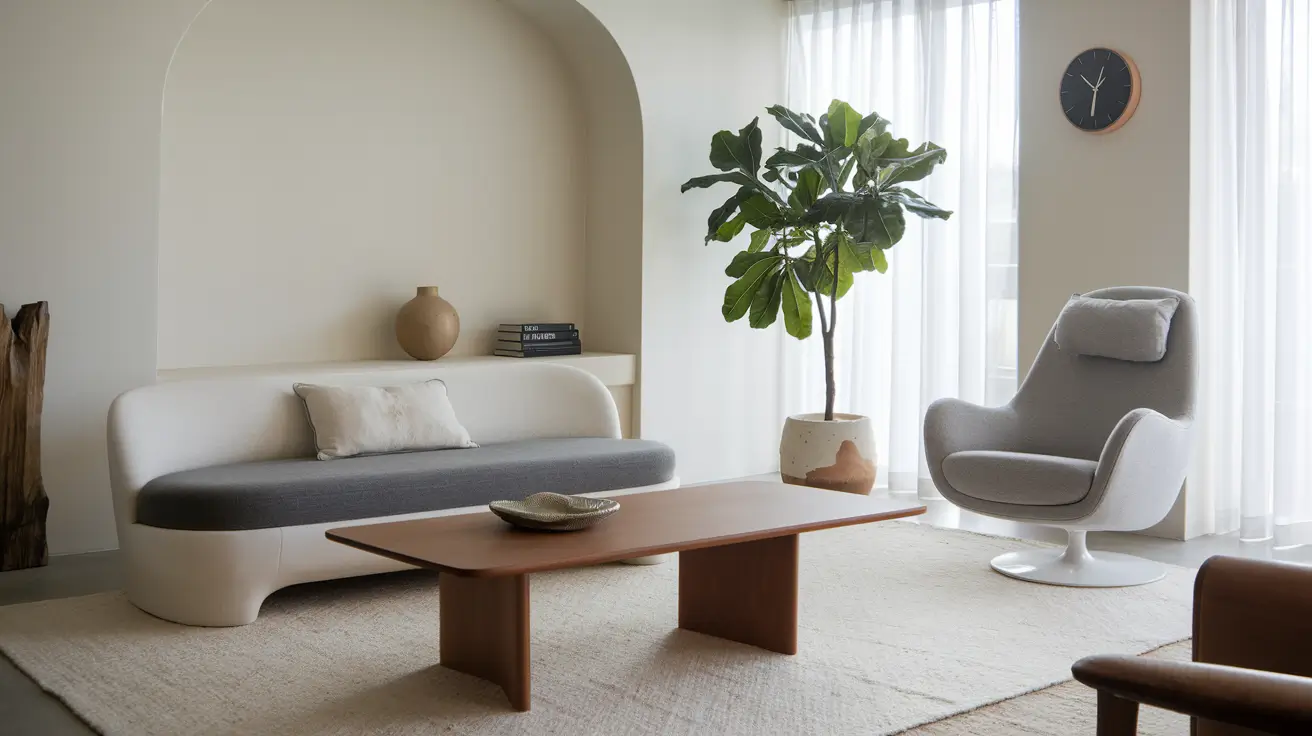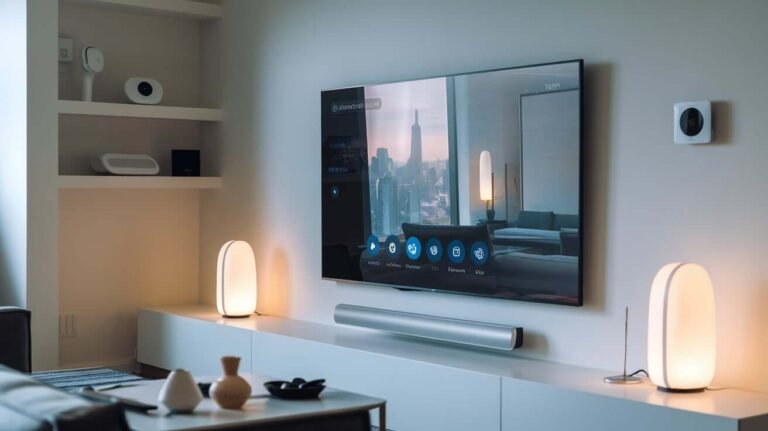The Intersection of Technology and Home Decor: 12 Powerful Ways to Transform Modern Living Spaces
In today’s world, the intersection of technology and home decor is revolutionizing how we perceive and interact with our living spaces. Our homes are no longer just places to rest and recharge; they have become immersive environments enhanced by digital and automated systems designed to elevate comfort, functionality, and aesthetics. As we explore this exciting intersection, we’ll uncover how innovative technology is shaping the way we design, personalize, and experience our homes.
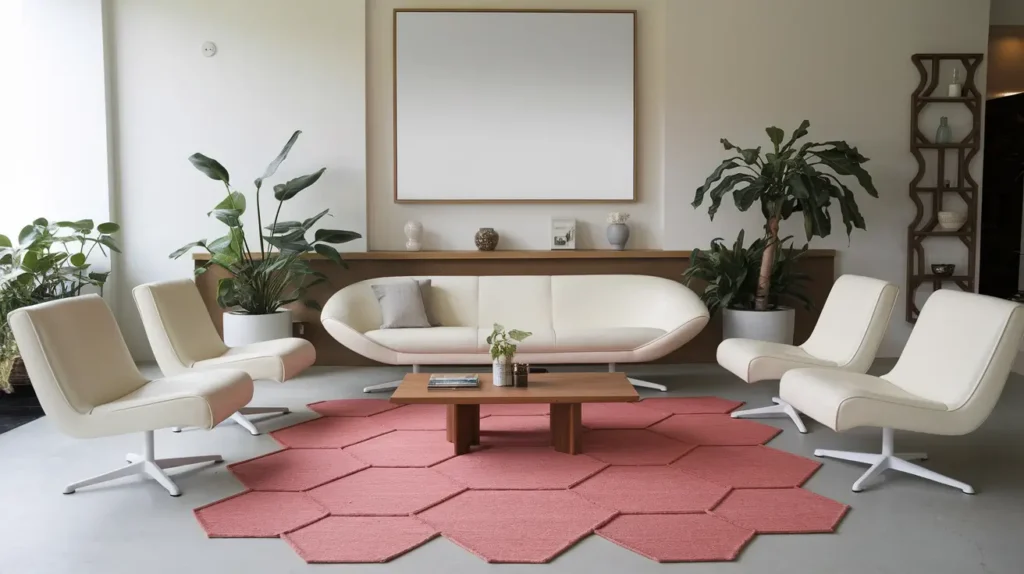
Table of Contents
- 1. Smart Home Systems: Redefining Convenience
- 2. Intersection of Technology and Home Decor: Augmented Reality (AR) and Virtual Reality (VR) in Interior Design
- 3. Sustainable and Eco-Friendly Technologies
- 4. Intersection of Technology and Home Decor: Smart Security Solutions for Safer Homes
- 5. Smart Kitchens: The Heart of Modern Homes
- 6. Personalized Home Entertainment Systems
- 7. Intersection of Technology and Home Decor: Wellness and Health Technologies
- 8. Home Automation and AI: A New Era of Intelligent Living
- 9. Advanced Home Workspaces for Remote Work
- 10. Minimalistic Yet Functional Designs Through Smart Storage Solutions
- 11. The Rise of Bio-Design: Integrating Nature and Technology
- 12. The Future of Home Decor and Technology: What’s Next?
- Conclusion
- Frequently Asked Questions!
- 1. How does technology enhance modern home decor?
- 2. What are some examples of smart home technology for decor?
- 3. How can sustainable technology be integrated into home decor?
- 4. What role does AI play in home automation?
- 5. How does augmented reality (AR) benefit interior design?
- 6. What are some examples of smart kitchen technology?
- 7. How does biophilic design integrate nature into tech-enhanced homes?
- 8. Are smart security systems easy to use?
- 9. What is the future of home decor and technology?
- 10. How can I start integrating technology into my home decor?
1. Smart Home Systems: Redefining Convenience
Modern home decor is increasingly intertwined with smart home technology, making daily living more efficient, secure, and enjoyable. With advancements in the Internet of Things (IoT), homeowners can now control everything from lighting to heating systems and even household appliances with a simple voice command or smartphone tap.
- Voice-Controlled Assistants
Devices like Amazon Alexa, Google Assistant, and Apple’s Siri serve as central hubs, allowing users to control multiple aspects of their home environment. Imagine walking into a room and having the lights adjust to your preference or your favorite playlist start automatically. These voice-activated systems also adapt to individual preferences, creating an ultra-personalized living experience. - Smart Thermostats
Home decor integrates beautifully with smart thermostats such as Nest and Ecobee, which blend seamlessly with interior design while optimizing energy use. These devices learn a household’s temperature preferences and adjust accordingly, reducing costs while enhancing comfort. - Automated Lighting
Lighting is crucial in any home decor scheme. Smart lighting systems like Philips Hue allow users to change light colors, brightness levels, and even schedules through their phones. With smart lighting, homeowners can create ambiance in each room while conserving energy.
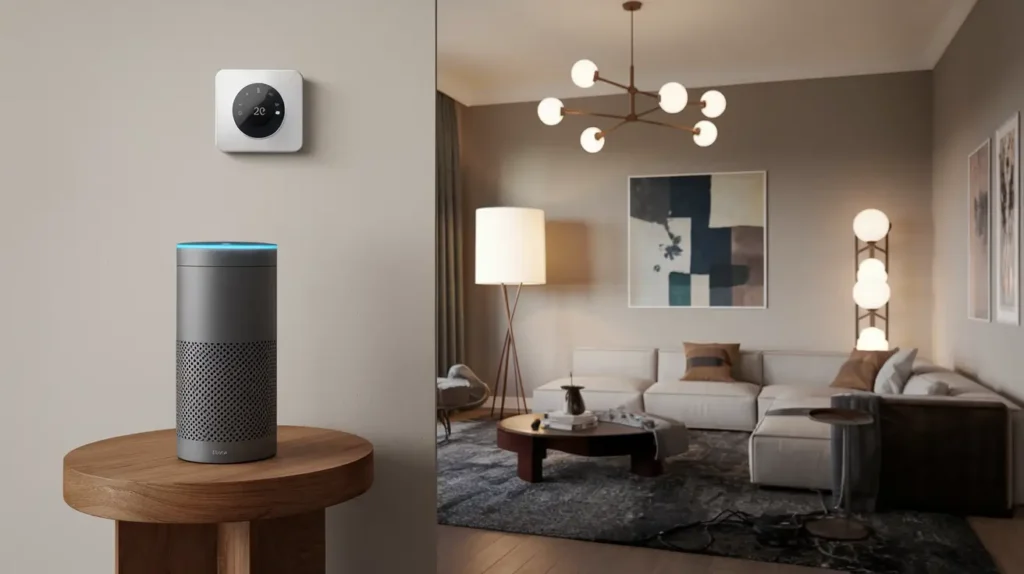
2. Intersection of Technology and Home Decor: Augmented Reality (AR) and Virtual Reality (VR) in Interior Design
The advent of AR and VR technologies has redefined interior design, empowering homeowners to visualize and customize their spaces before committing to any decor choices. These tools are invaluable for architects, designers, and DIY enthusiasts alike.
- Virtual Room Visualization
AR applications, such as the IKEA Place app, enable users to see how furniture and decor items would look in their spaces using their smartphones. This function saves time, money, and effort, allowing homeowners to make confident decisions about furniture and layout. - Immersive VR Experiences
With VR headsets, users can take a 3D walkthrough of a proposed design plan. This technology provides a hands-on approach, letting people explore their future homes and make adjustments as needed, ensuring their spaces align perfectly with their vision.
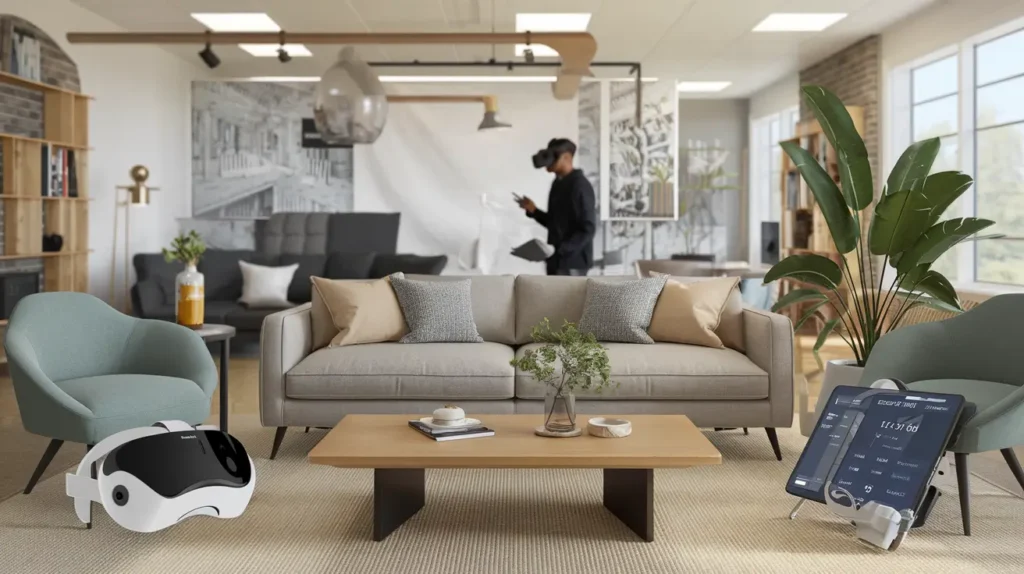
3. Sustainable and Eco-Friendly Technologies
Today’s homeowners are increasingly mindful of their environmental footprint, and sustainable technology is a major trend shaping home decor choices. Eco-conscious innovations not only reduce waste and energy consumption but also add a unique aesthetic and sense of responsibility to modern living spaces.
- Energy-Efficient Appliances
Smart appliances, such as refrigerators, washing machines, and dishwashers, consume less energy while delivering top performance. They often include monitoring capabilities, notifying homeowners about their energy usage and suggesting ways to reduce waste. - Solar Panels and Renewable Energy
Solar panels, once considered bulky and unsightly, have become more visually appealing and efficient. Integrated seamlessly into home decor, they transform roofs into clean energy sources, significantly reducing reliance on traditional power grids and enhancing the property’s value. - Eco-Friendly Materials and Furniture
Sustainable furniture made from bamboo, recycled metal, or reclaimed wood offers an environmentally friendly alternative that doesn’t compromise on style. These materials complement modern, rustic, or industrial themes, allowing homeowners to create chic yet responsible spaces.
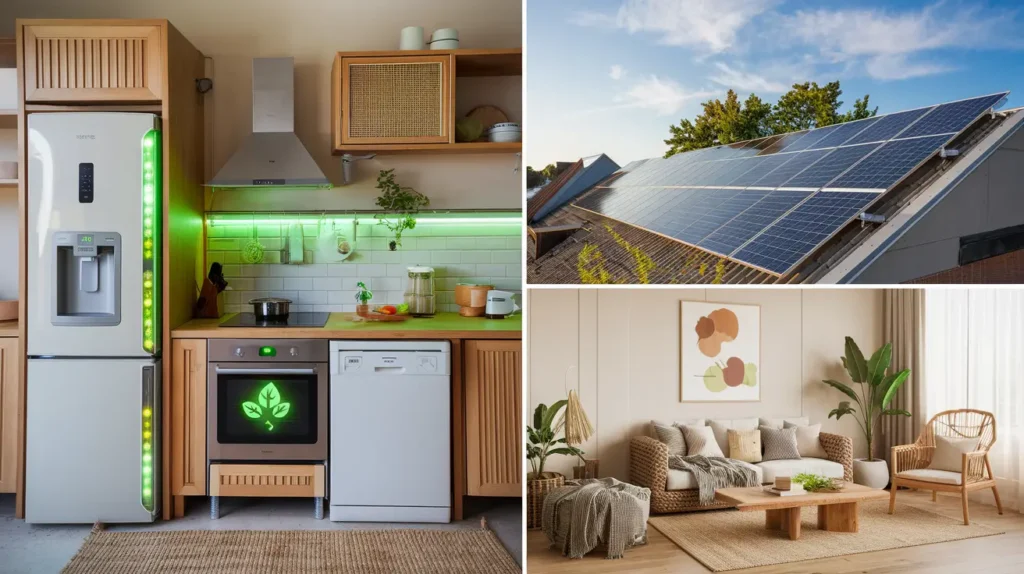
4. Intersection of Technology and Home Decor: Smart Security Solutions for Safer Homes
As home automation evolves, so does the importance of security technology. Integrated systems ensure homeowners can monitor their spaces even when they’re away, offering peace of mind with real-time notifications and control.
- Intelligent Surveillance Cameras
Advanced surveillance cameras with facial recognition and motion detection are not only deterrents for potential intruders but also tools for monitoring children, pets, and deliveries. Systems like Ring and Nest Cam enable live video feeds and alerts directly to a smartphone, making security accessible anytime, anywhere. - Smart Locks and Biometric Access
Smart locks, such as August and Schlage Encode, provide keyless entry options, enhancing security and convenience. Some of these locks are equipped with fingerprint and face recognition capabilities, ensuring only trusted individuals can access the home. - Complete Home Security Systems
For those seeking comprehensive protection, systems like ADT and SimpliSafe offer packages that include cameras, alarms, and sensors. Many of these systems are compatible with smart home hubs, enabling centralized control and seamless integration into home decor.
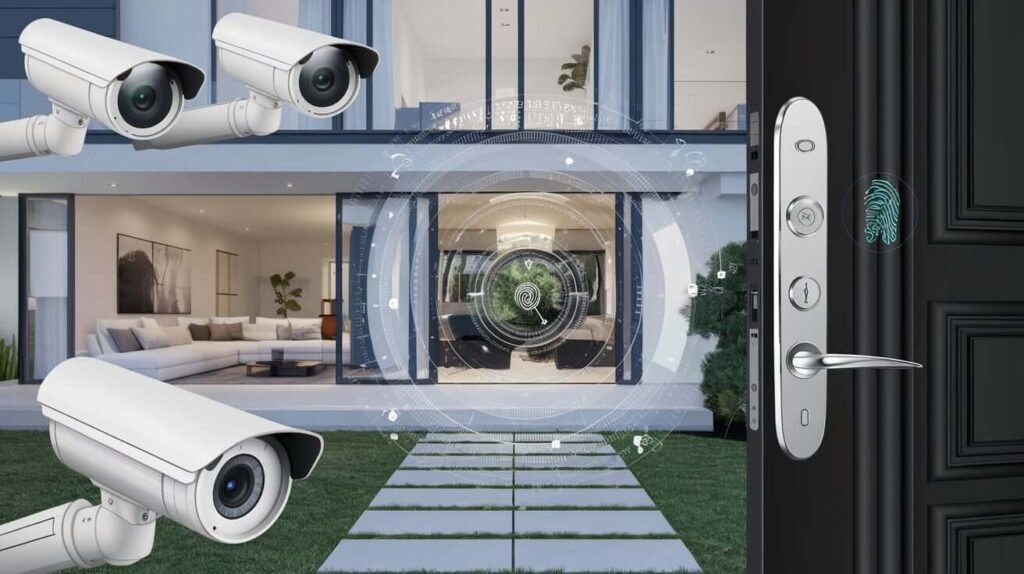
5. Smart Kitchens: The Heart of Modern Homes
The kitchen has always been a focal point in homes, and with technological advancements, it’s more functional and stylish than ever. The modern kitchen combines appliance automation with design aesthetics, ensuring homeowners can cook and entertain effortlessly.
- Smart Refrigerators
Equipped with touchscreens, cameras, and Wi-Fi connectivity, smart refrigerators like the Samsung Family Hub track food inventory, create grocery lists, and even suggest recipes. These devices add a tech-savvy edge to kitchens while streamlining meal preparation. - Automated Coffee Makers and Cooking Devices
Appliances such as smart coffee makers and multicookers can be controlled via smartphone apps, so breakfast can be prepared with minimal effort. These devices can be programmed to start at specific times, ensuring meals and beverages are ready when needed. - Induction Cooktops and Precision Cooking Tools
Smart cooktops and sous-vide devices ensure perfect cooking temperatures, helping even novice chefs create restaurant-quality dishes. These additions not only enhance the culinary experience but also lend a sleek and modern look to the kitchen.
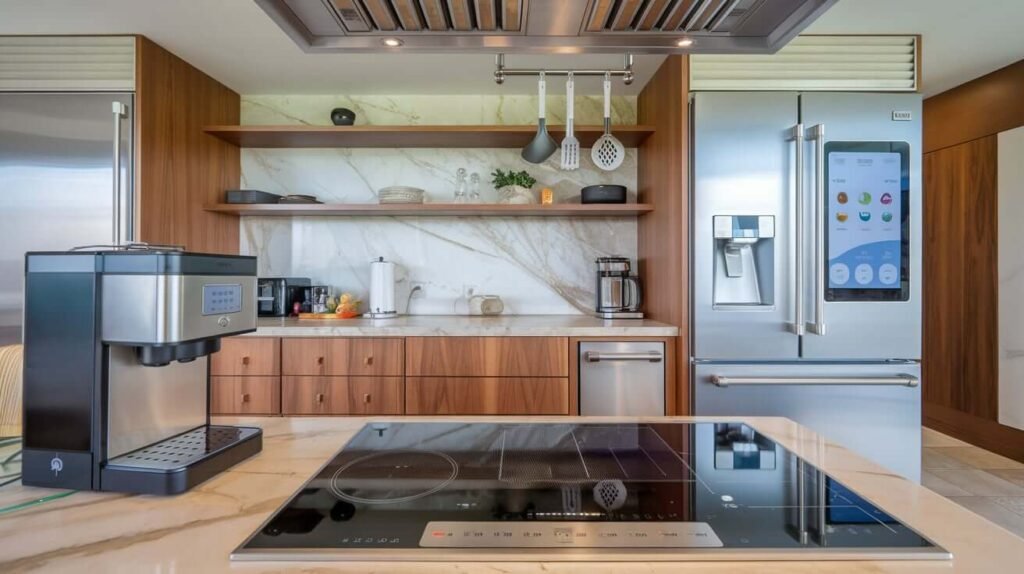
6. Personalized Home Entertainment Systems
Entertainment systems have evolved to offer personalized experiences tailored to each family member’s preferences, integrating seamlessly with home decor and boosting the aesthetic appeal of entertainment spaces.
- Smart TVs and Streaming Devices
Smart TVs and streaming devices such as Apple TV, Roku, and Fire Stick give homeowners access to an array of media. Many of these devices have voice-activated features, allowing users to play music, stream movies, or control the TV without lifting a finger. - Multi-Room Audio Systems
Systems like Sonos and Bose provide high-quality, wireless audio throughout the home. With options for different rooms, homeowners can enjoy uninterrupted music or podcasts as they move from one space to another. - Gaming Consoles and VR Gaming
For gaming enthusiasts, consoles like PlayStation and Xbox offer immersive gaming experiences, while VR systems elevate gameplay to another level. These setups are not only about entertainment but also serve as interactive decor elements that enhance the vibe of modern living rooms.
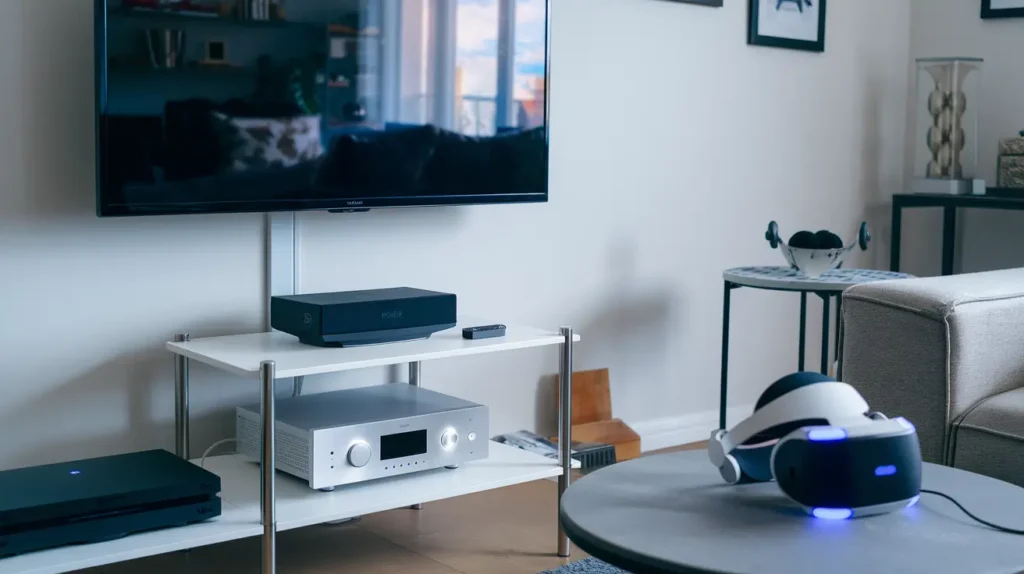
7. Intersection of Technology and Home Decor: Wellness and Health Technologies
The modern home is not just about aesthetics but also about creating a space that promotes well-being. Home decor now includes technology aimed at enhancing health, relaxation, and overall lifestyle.
- Air Purifiers and Humidifiers
Air purifiers and humidifiers contribute to cleaner, healthier indoor air. Many of these devices are now designed with sleek aesthetics, making them stylish additions that promote well-being and fit seamlessly into any decor. - Smart Mattresses and Sleep Technology
Sleep tracking systems and smart mattresses monitor sleep patterns, helping users improve their rest quality. Some smart beds even adjust firmness based on a person’s preferences, making the bedroom a sanctuary for relaxation.
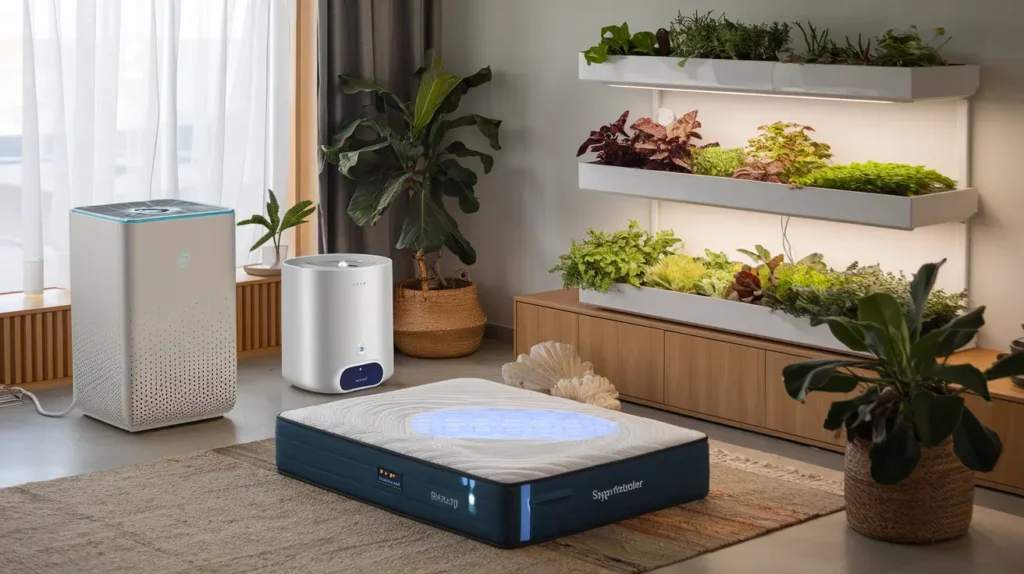
- Hydroponic Indoor Gardens
Bringing greenery indoors has never been easier with smart gardens like AeroGarden, which allow homeowners to grow fresh herbs and plants year-round. These gardens are perfect for city dwellers and contribute to the ambiance and air quality in any space.
8. Home Automation and AI: A New Era of Intelligent Living
Home automation is making homes more intuitive, utilizing artificial intelligence (AI) to respond to user needs in real-time. AI-powered systems learn from behavior patterns, enabling homes to proactively anticipate and cater to the unique needs of each resident. As this technology becomes more accessible, smart homes are evolving to become genuinely “intelligent” environments.
- AI-Driven Predictive Adjustments
AI can analyze a homeowner’s habits and adjust environmental settings accordingly. For instance, AI can lower blinds at sunset or adjust room temperatures based on outside weather conditions. By continually learning user preferences, AI offers a seamless and ultra-personalized experience that anticipates needs without manual input. - Routine Scheduling and Automation
AI in home automation also allows homeowners to create detailed schedules. Lights, appliances, and even daily routines, like watering indoor plants or preparing morning coffee, can be automated and timed to align with each individual’s lifestyle. Such features elevate comfort and convenience, turning homes into responsive environments tailored to daily rhythms.
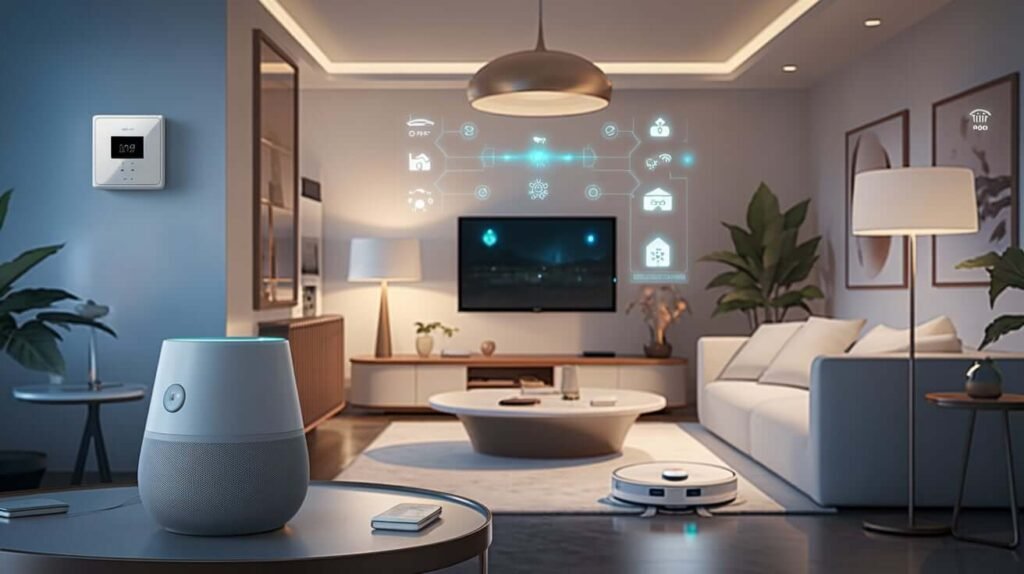
- Enhanced Energy Management
AI-integrated energy management systems offer sophisticated insights into energy consumption patterns. By providing detailed analytics and smart recommendations, these systems empower users to make energy-efficient choices, thus reducing costs and environmental impact without sacrificing comfort.
9. Advanced Home Workspaces for Remote Work
With remote work becoming a lasting trend, the demand for technology-enhanced home offices has surged. An optimized workspace not only boosts productivity but also adds a professional touch to home decor. By leveraging smart devices and tech-savvy furniture, homeowners can create an office space that blends style with high functionality.
- Ergonomic Furniture with Smart Features
Sit-stand desks, ergonomic chairs, and other office furniture now come with built-in smart features. Some sit-stand desks, for instance, can automatically adjust based on usage patterns, reminding users to change positions to prevent strain. - Noise-Canceling Technology
Noise-canceling devices have become invaluable, especially for individuals working in bustling households. Advanced noise-canceling technology minimizes distractions, creating a focused atmosphere that enhances concentration and efficiency.
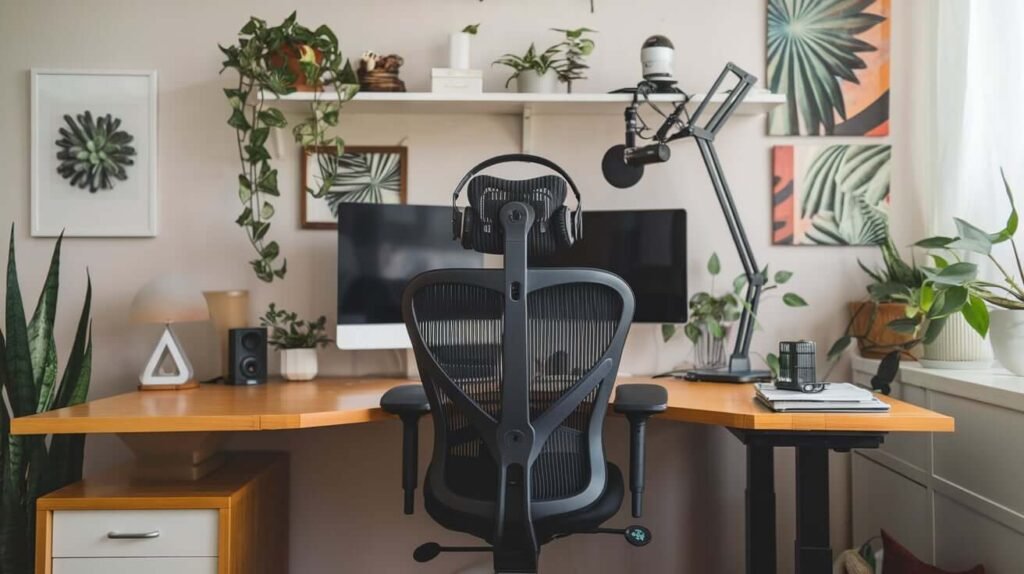
- High-Quality Video and Audio Equipment
As video calls remain a staple of remote work, high-quality webcams, microphones, and lighting have become essential. Smart lighting systems, along with HD cameras and microphones, ensure that workspaces are not only well-equipped but also visually appealing.
10. Minimalistic Yet Functional Designs Through Smart Storage Solutions
A blend of minimalism and technology is taking hold, as homeowners seek clutter-free environments that prioritize functionality. Tech-savvy storage solutions help homeowners keep their spaces organized, merging style with practicality.
- Modular Shelving and Storage Units
Modular storage units are increasingly popular, allowing users to reconfigure storage setups to suit different needs. These units are ideal for creating adaptable spaces, from living rooms to home offices, without disrupting the decor. - Hidden Storage with Motorized Access
Automated storage solutions, such as motorized cabinets and drawers, provide hidden storage that opens and closes with the push of a button. Such designs are ideal for creating clean lines and a modern, uncluttered look, making them a favorite in minimalist decor.
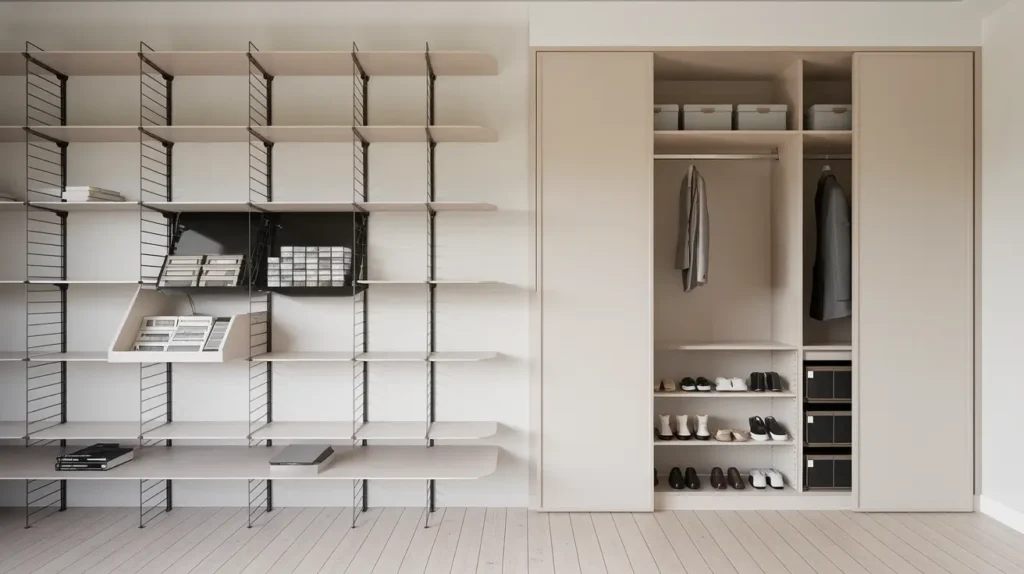
- Smart Wardrobes and Closets
Smart closets equipped with lighting sensors, inventory management, and climate control ensure that clothing and accessories are well-maintained and accessible. Such closets can organize items by season, reducing clutter and helping users make the most of their wardrobe space.
11. The Rise of Bio-Design: Integrating Nature and Technology
The desire to bring the natural world indoors has given rise to bio-design, a trend that incorporates plants and nature-inspired elements into tech-enhanced spaces. This movement towards biophilic design not only promotes a sense of tranquility but also harmonizes with modern, technology-driven interiors.
- Living Walls and Indoor Gardens
Living walls, or vertical gardens, bring a natural element into homes, helping to purify air and improve well-being. These installations are becoming more common in tech-enhanced homes, offering a blend of nature and aesthetics that complements smart decor. - Water and Light Features with Smart Controls
Water fountains, indoor waterfalls, and lighting systems with smart controls bring elements of nature indoors in a manageable way. Adjustable LED lighting that mimics natural sunlight can also help maintain indoor plants and create a refreshing ambiance.
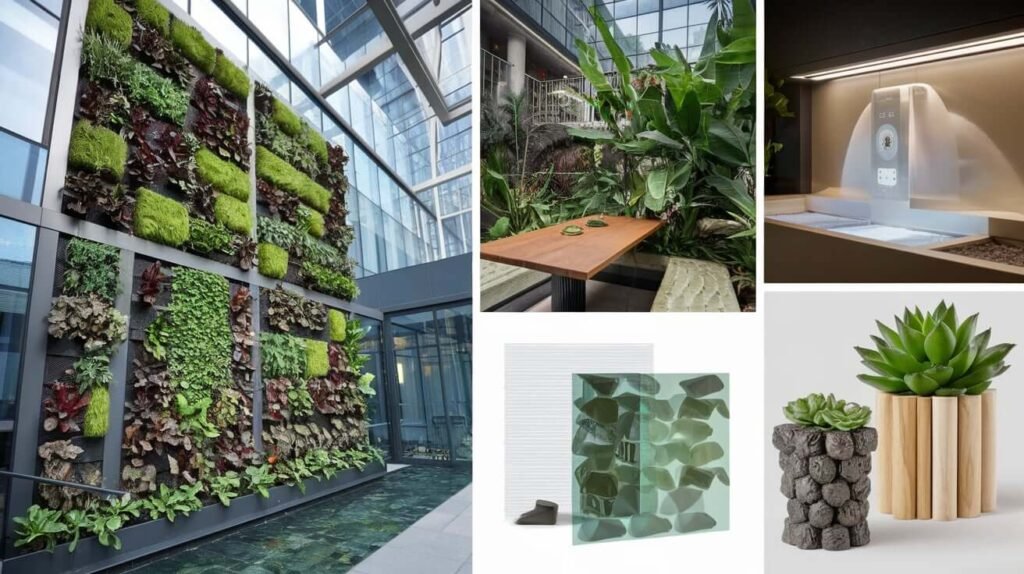
- Eco-Tech Materials
The integration of eco-tech materials like cork, bamboo, and recycled metal into home decor reinforces sustainability while enhancing a home’s natural aesthetic. These materials are durable, stylish, and eco-friendly, appealing to homeowners who value both design and environmental consciousness.
12. The Future of Home Decor and Technology: What’s Next?
As we look ahead, the intersection of technology and home decor promises even more transformative innovations that will redefine modern living spaces. Emerging technologies, such as 5G, AI advancements, and enhanced smart home networks, are set to propel home automation to new heights.
- AI and Emotional Recognition
Future smart homes may incorporate emotional recognition technology, adjusting lighting, temperature, and even soundscapes to match the mood of residents. This emotional intelligence will create a more responsive environment that can comfort, energize, or relax, depending on the user’s needs. - Integrative Robotics
Home robotics is another field primed for growth. Robotic systems designed for cleaning, caregiving, or assistance in household tasks could soon become regular features in modern homes, integrating seamlessly with decor and further automating daily routines.
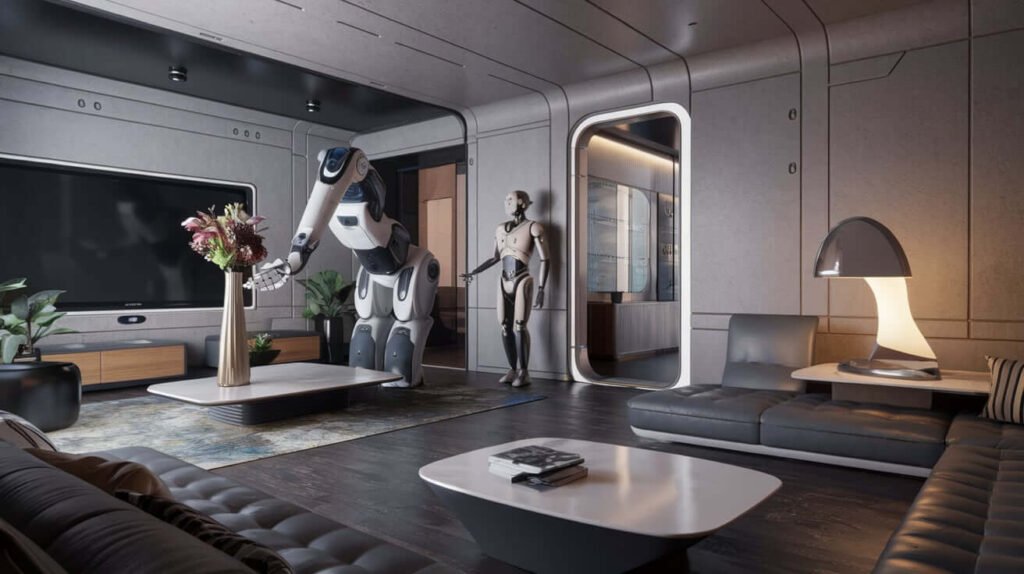
- Quantum Computing and Smart Homes
Quantum computing holds the potential to revolutionize home automation by enabling faster, more accurate data processing. This leap could lead to highly intelligent systems that adapt in real-time to an ever-changing environment, transforming homes into spaces of unparalleled customization and convenience.
Conclusion
The intersection of technology and home decor is transforming our living spaces into multifunctional environments that blend convenience, style, and innovation. Whether through smart appliances, immersive entertainment systems, or sustainable solutions, homeowners now have endless options to create personalized and efficient spaces. As this trend continues to evolve, we can anticipate even more groundbreaking advancements that will redefine what it means to feel “at home.”
Frequently Asked Questions!
1. How does technology enhance modern home decor?
Technology enriches home decor by adding convenience, functionality, and aesthetics. Smart home systems like automated lighting, thermostats, and voice-activated assistants make everyday tasks easier, while innovations like augmented reality (AR) enable homeowners to visualize decor changes before committing. These advancements create an immersive and personalized living experience.
2. What are some examples of smart home technology for decor?
Smart home technology for decor includes voice-controlled assistants (like Amazon Alexa and Google Assistant), smart lighting systems, smart thermostats, and automated storage solutions. Additionally, tools like AR and VR let homeowners see furniture and decor layouts in virtual spaces, making decor planning simpler and more accurate.
3. How can sustainable technology be integrated into home decor?
Sustainable technology in home decor can include energy-efficient appliances, solar panels, and eco-friendly materials like bamboo and recycled wood. Smart thermostats and LED lighting systems also reduce energy usage. Sustainable furniture choices made from responsibly sourced materials align with eco-conscious values while enhancing home aesthetics.
4. What role does AI play in home automation?
AI in home automation creates intelligent systems that adapt to homeowners’ routines and preferences. AI-driven devices can adjust lighting, temperature, and security settings based on user behavior. This personalization makes homes more intuitive, offering customized comfort and enhanced energy management.
5. How does augmented reality (AR) benefit interior design?
AR allows users to visualize how different decor items, furniture, or colors would look in their actual space. This “try-before-you-buy” approach saves time, money, and effort, enabling homeowners to make confident design choices. Many apps, like the IKEA Place app, utilize AR for enhanced shopping and planning.
6. What are some examples of smart kitchen technology?
Smart kitchen technology includes smart refrigerators with built-in touchscreens and Wi-Fi, automated coffee makers, induction cooktops, and precision cooking tools like sous-vide machines. These devices enhance convenience by offering remote control options and personalized cooking settings.
7. How does biophilic design integrate nature into tech-enhanced homes?
Biophilic design uses natural elements like living walls, indoor plants, and eco-friendly materials to bring the outdoors inside. Smart lighting systems that mimic natural sunlight and automated hydroponic gardens allow homeowners to enjoy greenery and maintain a natural ambiance with ease.
8. Are smart security systems easy to use?
Yes, smart security systems are designed for user-friendly operation and are often controlled via smartphone apps. Features like live video monitoring, smart locks, and motion sensors offer added convenience and peace of mind, enabling homeowners to manage security remotely.
9. What is the future of home decor and technology?
The future of home decor and technology points towards more advanced AI integration, emotional recognition systems, home robotics, and quantum computing. These innovations will continue to make homes more responsive, customizable, and efficient, enhancing both functionality and style.
10. How can I start integrating technology into my home decor?
To start integrating technology into home decor, begin with simple smart devices like a voice assistant or smart lighting. From there, you can explore energy-efficient appliances, a smart thermostat, or home security options. Gradually adding these technologies ensures a seamless transition to a tech-enhanced home.

